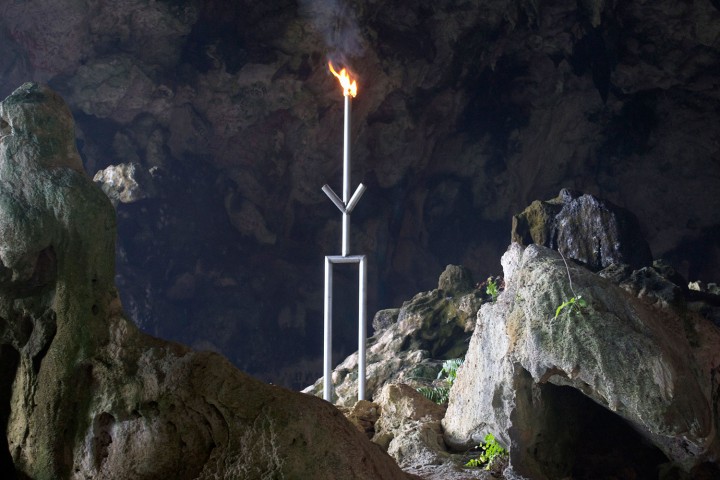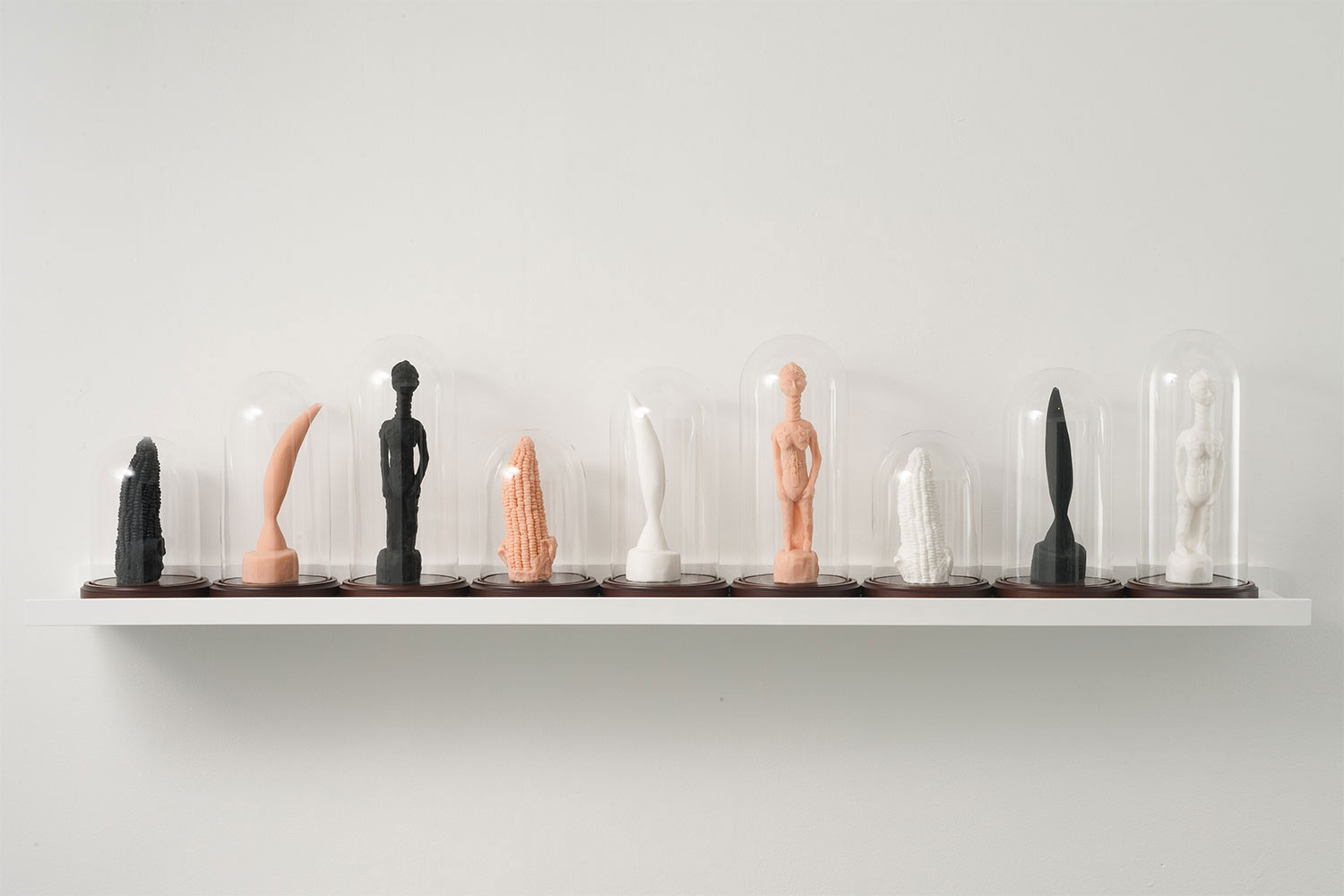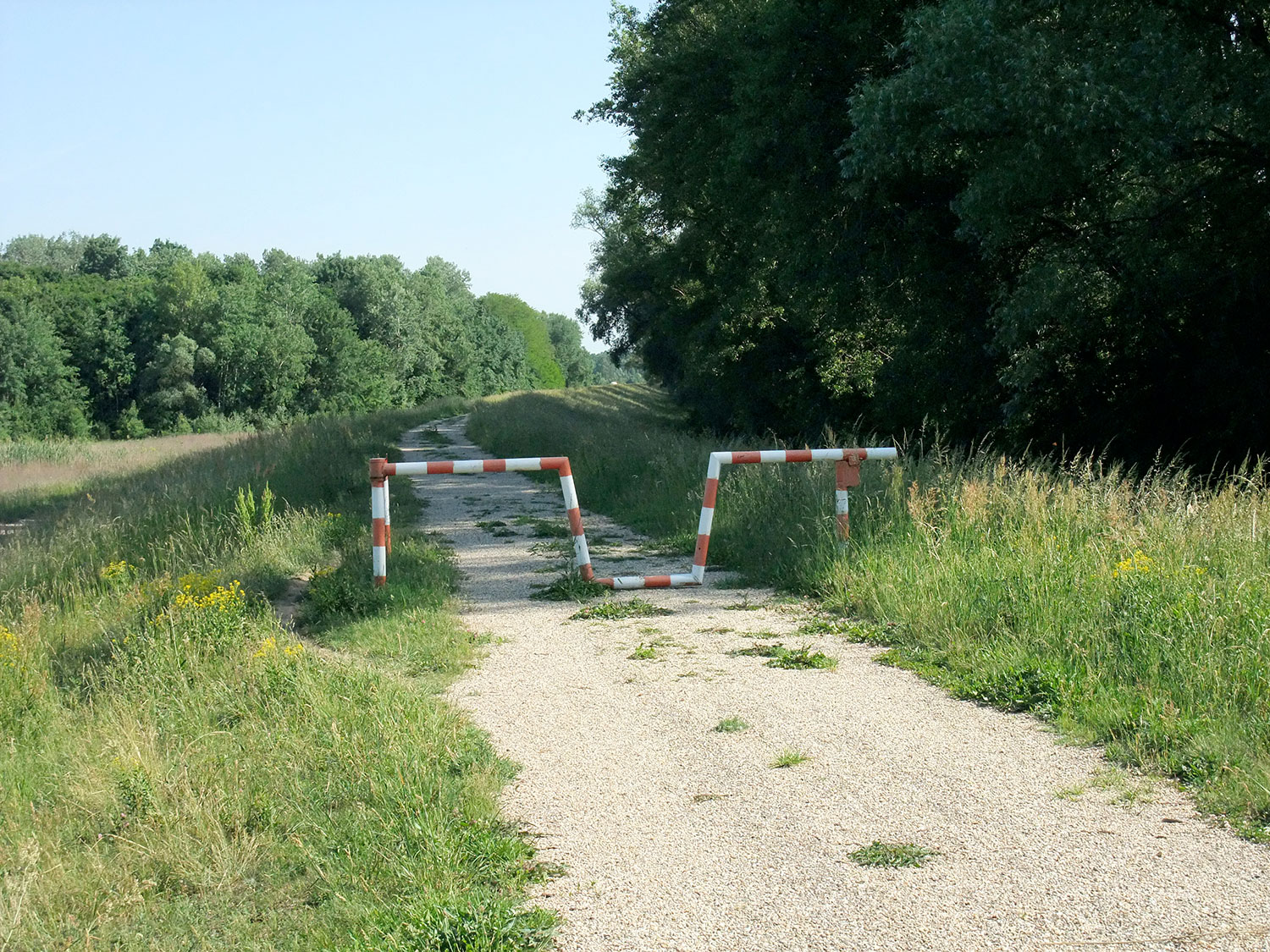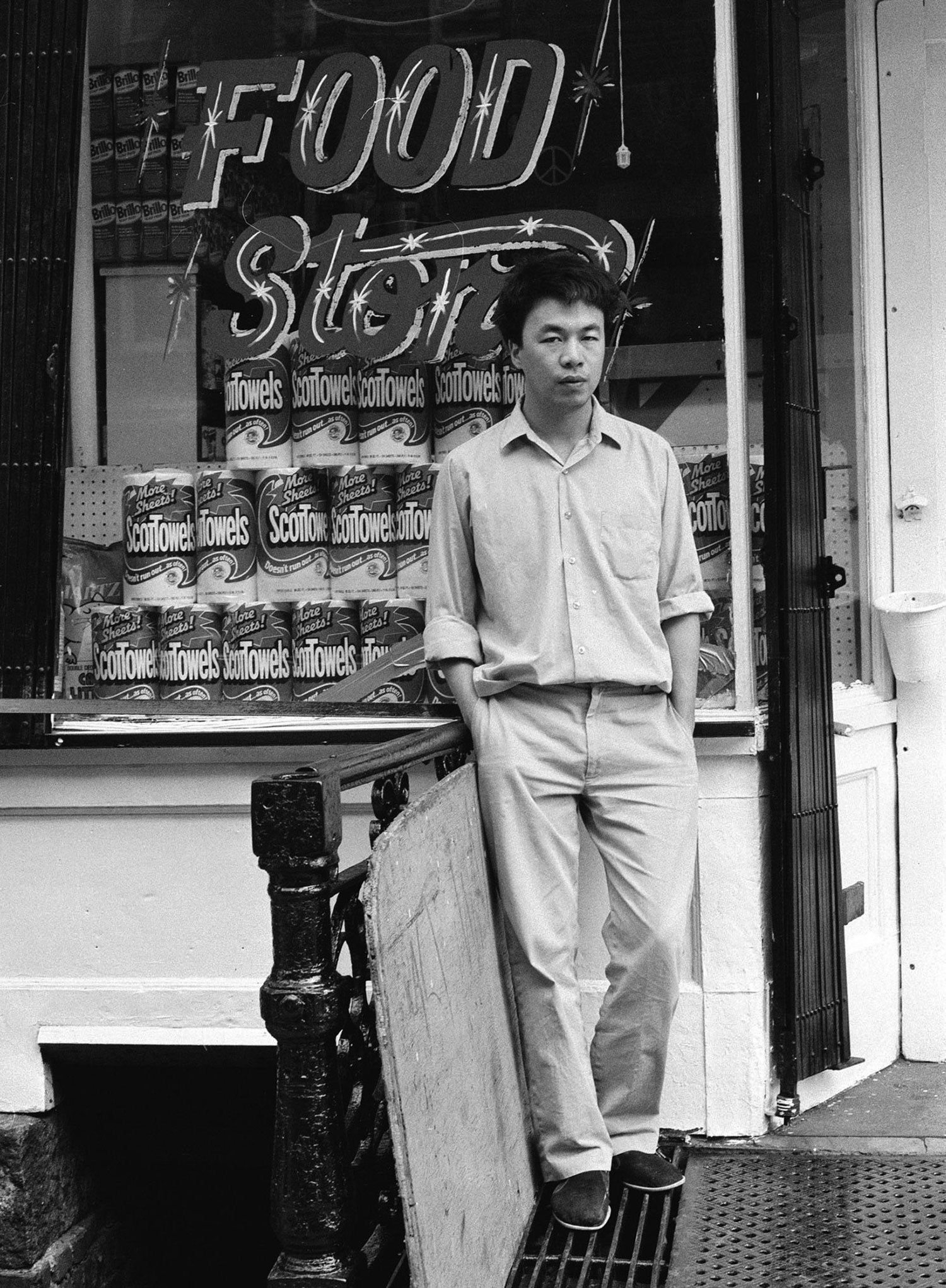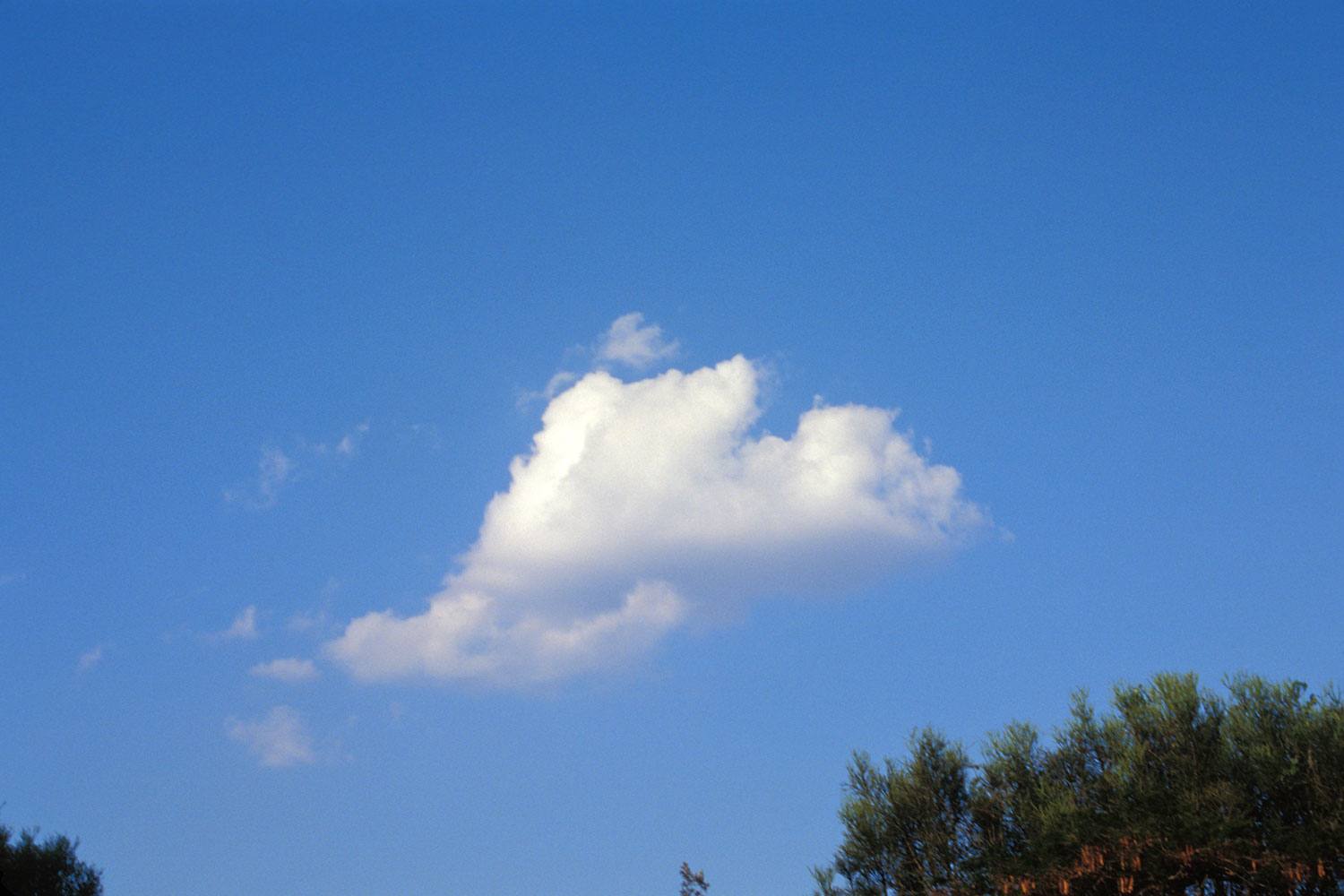

Maurizio Cattelan: Your first solo exhibition in New York, at Ramiken Crucible in 2010, was titled “The Management of Barbarism.” What kind of barbarism were you managing?
Andra Ursuta: My own. “The Management of Barbarism” is actually the loose translation of the title of an ‘Al-Qaeda playbook’ that describes tactics of fostering nationalist and religious resentments and violence as primers for Jihad. I wanted to reverse-hijack the concept and use it to funnel my own nationalist and religious resentments I feel towards my own country.
MC: That’s so strange — I’ve only heard good things about Romania.
AU: We take pride in our misery.
MC: Congratulations. Is it so miserable to be an artist?
AU: Not at the moment. But it is a little embarrassing.
MC: You’ve made works that would make most people want to go into hiding. Your self-portraits are so rude that I’ve heard people assuming you are a man, exploiting a model. How do you respond to this?
AU: They would be very offensive if made by a man, but I actually see them as very feminine exercises in extreme passive aggression.
MC: Crush (2011) is a very realistic full body cast of you, nude, as a flattened stone age peat bog mummy, covered in what appears to be an enormous amount of semen. Why put yourself in this position? And how did you make such a thing?
AU: It’s a very uncomfortable and slightly melodramatic description of an emotional state, of feelings of rejection and worthlessness. Like most of my works, it started with a very dumb, literal understanding of the word “crush.” Crush is the sum of all crushes that lead to heartbreak experienced over a lifetime, or over centuries, if you think of the female protagonist as an archetypal used and discarded woman.
MC: That seems like an incredibly negative statement — that women are essentially “cum dumpsters,” defined by their relationships to men, and literally crushed by the disappointment of their expectations.
AU: Yes, I’ve been there. Crush is a self-portrait that fulfills all those requirements. It’s made from a female perspective that tries to mimic macho detachment and fails, implying a violent and degrading self-annihilation. The female subject’s expectations are only part of it, there are also cultural expectations that go against them. I rejected the misogynistic culture I came from and at the same time, although it’s not cool to admit it, I don’t relate to the liberal sexual attitudes of the ultra-civilized society I now live in. They both lead to the sense of being interchangeable and therefore worthless. So Crush is really about a personal and somewhat neurotic failure to optimally function in the contemporary world.

MC: How does the representation of your flattened body in Crush function differently than the flattened version of your body that you created as part of Vandal Lust (2011)?
AU: The body in Vandal Lust is more of a prop, but other than that, they are very similar. Both works allude to events that result in the destruction of their protagonist. They are cartoonish skits that lead you to imagine an optimistic beginning while confronting you with the aftermath of a disaster. These pieces are only sculptures by default; they mainly function as forensic evidence of failure.
MC: What is the failure of Vandal Lust?
AU: Vandal Lust revisits an iconic installation from behind the Iron Curtain: Ilya Kabakov’s The Man WhoFlew Into Space From His Apartment (1988). The work depicts a typically Soviet apartment in the aftermath of its inhabitant’s launch through the ceiling with the help of a homemade contraption featuring springs. The theme of escape featured prominently in Eastern European consciousness at the time, and due to various political and economic turns over the last few decades, it survives to this day. Tales of spectacularly wrongheaded schemes to get to the West still surface in the international media from time to time. Vandal Lust applies the same logic to the art world, using a shoddy medieval siege weapon to launch the artist through the gallery window. But because of the physical limitations of the space, the body ends up flattened against the back wall instead.
MC: The body is you, a self-portrait, flattened like Wile E. Coyote against a boulder; what are you trying to escape? The gallery?
AU: Escape the gallery and enter the world. That aspect didn’t matter so much; I saw the move to escape more as a convulsive gesture that has long been divorced from a meaningful context. Like muscle memory.

MC: You’ve also used your body to make furniture; you installed a sculpture in a small space on Delancey Street that consisted of 43 brightly colored casts of your ass, constructed as chairs. How does this self-portrait function for you?
AU: I set the bar very low when I started making sculptures. The thinking was that if a piece would fail as sculpture, it could still make a useful chair — it’s not art, but at least you can sit on it. The self-portraits started for similar reasons. The self-portrait is one of the stupidest, least imaginative topics in art. It’s an admission that you have no good ideas. Combine the two and you get ass chairs: furniture with its own agenda, empty but at the same time occupied, an uncooperative sculpture that shows its ass to the viewer, and objectified female body parts ostensibly designed to please.
MC: Why so many together, as one piece?
AU: I was emulating a trope from porn films, the stack of asses. But as amputated objects, seeing them huddled together in a tiny, filthy storefront on Delancey Street made them look more like illegal immigrant sex workers.
MC: Illegal immigrants are regarded as powerless by the law, and yet people fear them so much. “Magical Terrorism” (2012), your third solo show at Ramiken Crucible, was a sort of manifestation of that powerless power. Can you explain the concept of “magical terrorism”?
AU: I once read a news story about a tax law protest, taking place in Romania. The government had just passed a law recognizing witchcraft as a legitimate, and therefore taxable, profession. Fortunetelling and the occult are a booming business there, and the witches weren’t happy, so they decided to cast a curse on the government in retaliation. This happened around Occupy Wall Street and against the background of protests across the EU, which fizzled out with no real results. But the government of Romania did run into trouble soon after the curse. I decided to make a body of work based on the assumption that the curse, which is a form of magical terrorism, worked, and made fictional propagandistic sculptures to celebrate these witches, who also happen to be ethnically Roma, the quintessential European outcasts not usually commemorated in marble.

MC: Everything in the show was on dollies and pallets, and the front window glass of the gallery was broken, the shards all over the floor — why?
AU: I want to say institutional anger because I think the time of mere critique has passed. But to be perfectly honest, the broken glass wouldn’t have happened without the encouragement of Mike Egan, my gallerist and (hopefully) future husband. So ideologically, the whole thing is problematic — it’s unclear who is trumping whom there. But kept the pieces in the show mobile because that resonates with the transient lifestyle of the Roma. I wanted the show to feel like a squat that happens to involve large, heavy, socialist-realist marble statues on wheels.
MC: So everything could be moved out, in the middle of the night, like the Roma camps in Europe?
AU: Yes.
MC: You seem to be indicating that terrorism trumps activism, as a force of change in the world. You’ve also made drawings of a dead Chechen soldier. Are these ideas related?
AU: Personally, I’m not positive or civilized enough to believe in activism; I’m more interested in scenarios where change comes through apocalyptic means and in outsiders. “Magical Terrorism” makes fairly lighthearted use of the concept of terrorism, almost putting a comical spin on it. Affluent Western European countries like France see the Roma as low-level terrorists because they disrupt living standards. The drawings I made after the photograph of an exhumed Chechen rebel was a much less political work concerned with repetition and an absurdist attempt to ‘copy’ the contents of the Internet by hand.
MC: The Chechen is also a delegitimized person — not an illegal immigrant, but definitely an individual denied recognition, specifically by the Russian government. The drawings are titled, sequentially, Man From The Internet. Can you explain how you came to make these drawings?
AU: I was only making drawings at the time, all based on low-resolution images from the Internet. They were not thematically related though all resulted in melancholy pen-and-ink drawings in watered-down gray inks. It was a very meticulous way of drawing that involved making hundreds of the smallest, thinnest lines with a pen nib, trying to find a handcrafted equivalent to digital fuzz. The content was not important, and when I found the image of the Chechen fighter I started to only draw that, over and over again. There was also something zombie-like in the repetition, and in the thought that this image floats in the virtual world like a ghost wiring to be contacted.

MC: So the Chechen serves as a radicalized cyberspace tangent, a bit of violent virtual reality that is completely unconfirmed and denied, and by drawing the image, you are making it real. A lot of your work seems to come from a hacked version of reality, as if you are breaking up the scraps of contradictory bits of history and merging them, folding them into forms and casting them into sculptures and drawings that exist on their own terms. And I feel that your work changes the space around it, much like how Donald Judd’s sculptures change the reason the space around them exists. But your work also seems to change the fundamental relationship of time and history around the object, as well as the space, in tune with an aggressive annihilation of the self. You aren’t climbing rungs of artistic achievement — you are murdering the concepts of will and identity that have betrayed you your whole life, and replacing those betrayals with undeniable physical objects. I have the benefit of viewing your work this way, I think mostly because the first sculpture of yours that I saw was Ass to Mouth (2010), which is perhaps the clearest diagram of how you make art and how you think. How did you come to make that piece?
AU: Ass to Mouth was concocted in the shadow of two pillars of ‘Romanianness’, Brancusi and Vlad the Impaler. In Romania Brancusi is revered as a genius, with emphasis placed on the ways in which his sculptures are a distillation of Romanian folk art and therefore an affirmation of the genius of the Romanian people over the ages. While Romanian contemporary painting has become successful internationally, sculpture lags behind, and I think the national obsession with Brancusi might be responsible. One of his most known works is Endless Column, which served as the departure point for Ass to Mouth, in which it became an impalement stake coated in black rubber to suggest an alternate use as an endless modernist butt plug.
MC: The sculpture seems to equate the experience of being impaled with the sexual pleasure of a studded dildo. Do these ideas have a relationship to your recent pole sculptures of women, which incorporate what appear to be coin slots into models of female genitalia? Brancusi seems trapped in there somewhere, paralyzed with fear.
AU: For me the piece has nothing to do with pleasure and is more about having things shoved down your throat (or the other way). There is a formal connection to the pole pieces in that the freestanding vertical line is somehowww immediately sculptural. It’s also connected to pre-modern conceptions of art, where objects were seen to possess undisclosed powers.
MC: A lot of your work seems to be a punishment in some way.
AU: Yes. I have a lot of guilt around making art.
MC: Why do you feel guilty about making art?
AU: Because I don’t think that it’s entirely legitimate.

